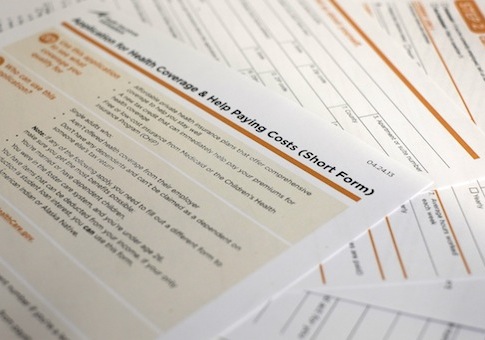By Caroline Humer
(Reuters) - Americans will pay an average premium of $328 monthly for a mid-tier health insurance plan when the Obamacare health exchanges open for enrollment next week, and most will qualify for government subsidies to lower that price, the Obama administration said on Wednesday.
The figure, based on data for approved insurance plans in 48 states, represents the broadest national estimate for how much Americans will pay for health coverage under President Barack Obama's healthcare reform law next year. The prices of the new plans are at the heart of a political debate over whether they will be affordable enough to attract millions of uninsured Americans.
Prices were lower in states with more competition among insurers and higher in states with fewer players, the U.S. Department of Health and Human Services (HHS) said in its report. Americans will be able to sign up for the new plans via online state exchanges beginning on October 1.
"For millions of Americans these new options will finally make health insurance work within their budgets," HHS Secretary Kathleen Sebelius said during a briefing with reporters.
The Obama administration is counting on signing up 7 million Americans in the first full year of reform through the state exchanges, including 2.7 million younger and healthier consumers who are needed to offset the costs of sicker members.
Debate over whether Obamacare will prove affordable for millions of uninsured Americans has been sharp during the past few months, as states have announced rates. States that have supported the law said it will lead to lower prices. Others that have opposed the reform - including Georgia, Florida, and Indiana - warned of "rate shock" for consumers compared to what they could buy on the individual insurance market a year ago.
HHS said the average price was 16 percent lower than its own projections on premiums. In addition, consumers who earn up to 400 percent of the federal poverty level, or $62,040 for a couple, will qualify for subsidies that will lower the price further.
TEXAS RATES BELOW AVERAGE
The data is mostly based on 36 states where the federal government will operate the insurance exchange. About 14 other states and the District of Columbia are running their own exchange.
Politics aside, states with the lowest average premium tend to have more insurance companies offering plans, the report said. It said eight issuers on average were selling plans in the states with average premiums in the lowest 25 percent, while states with average premiums in the top 25 percent had only three insurers on average.
Texas has been among the Republican-led states most fiercely opposed to Obamacare, but its monthly rates came in below the national average, HHS said. In Austin, Texas, with 76 plans to choose from, a 27-year-old would pay $169 per month for the lowest cost mid-tier plan. In Dallas-Fort Worth, with 43 plans to choose from, that price was $217 per month, the report said.
"The rates in Texas are looking good," said Gary Cohen, who is charged with overseeing the exchanges at the Centers for Medicare and Medicaid Services.
Enrolling enough consumers is key to making the healthcare overhaul work economically, with price considered the most important factor driving enrollment, according to insurance industry surveys.
Another concern has been that insurance companies will limit access to doctors in order to keep prices low. Cohen said that these so-called "narrow networks" were a trend before the Affordable Care Act went into effect.
The law was adopted in 2010 but two of its main pillars, the health exchanges and the expansion of Medicaid, take effect in 2014. Household names like UnitedHealth Group Inc, Aetna Inc, WellPoint Inc and Humana Inc will sell plans on at least some exchanges. Newcomers such as Medicaid specialist Molina Healthcare Inc will also play a role.
